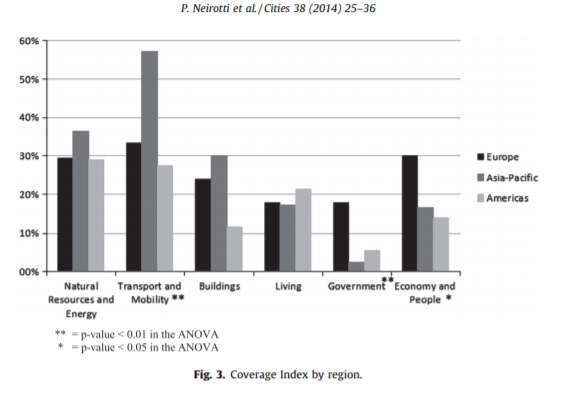what are smart cities? how can smart cities improve the lives of citizens?

The advent of modern information and communication technology (ICT) continues to offer a myriad of new opportunities for advancing and improving our lives. As populations migrate to urban spaces, it becomes only logical to utilize the data produced by ICT to catalyze such improvements. Smart cities are the embodiment of such efforts as they utilize the vast bodies of data produced in urban spaces to find solutions to many of the environmental, social, and technological issues caused by a century of unplanned expansion and large population growth and centralization.
Data, the core contributor to the ‘smart’ in smart cities, is collected by novel materials, sensors, and electronics. These tools are networked with computerized systems that store, process, and analyze the data collected. The data from these networked systems can then be used to support the decision-making process, as well as provide insight into the current and evolving needs of the city.
The origins of smart cities can be traced back to the post-WWII retrofitting of war technologies to civilian use, albeit efforts in that era were less than successful. In the late 1990s, the Smart Growth Movement incorporated a social aspect into the discussion around urban development and technology. However, it is only in the past decade that technology has evolved to the point that it can support system-wide advancements.
With the help of modern technologies, modern visions and applications of smart cities are often more robust and inclusive of a wider range of societal needs. However, since the practical application of smart cities is still evolving, there is no centralized definition nor are there standardized attributes.
At the same time, the realization of smart technology objectives is highly dependent on a range of factors, including size, population density, economic resources and capacity, environmental strategies, available technological resources, and other local contextual factors. Local factors tend to be the most influential as the needs and culture of a geographic space often drive the path of smart city implementation.

This, in turn, can result in challenges to creating a framework for smart city development, particularly because there is a continued divergence in the general understanding of smart cities. For example, there tends to be a focus on smart people, smart technology, or smart collaboration. In this sense,
- Smart technology: integrating technoscientific advancements into the infrastructure of the city. These technologies are expected to improve the organizational functionality of the city.
- Smart people: a focus on human capital and/or human resources as the key to smart city success. Smart people cities can be understood as spaces where a high proportion of the adult population has an advanced education and their education is expected to drive both innovation and growth.
- Smart collaboration: a people-centered perspective that focuses on citizens and other stakeholders. Smart collaboration aims to facilitate action via connections within knowledge centers. Smart cities that focus on smart collaboration are often called innovation hubs.
However, as is typically the case with system-focused activities, the reality is that a combination of each component is required to create a holistic outcome. Smart cities must incorporate each component to address the wide variety of needs within the city. Accomplishing such a feat requires smart city governance.
Smart city governance enables collaboration, utilizes technology intelligently, and facilitates knowledge creation. In turn, smart cities drive institutional change by acknowledging and embracing the political nature of socio-technical change. This means that creating a smart city requires a political understanding of technology and the capacity to use this understanding for economic and public growth.
Such an understanding is pivotal because the establishment of smart cities affects most aspects of life. Smart cities are thus interdisciplinary and include:
- Natural resources and energy: smart grids, public lighting, green/renewable energies, waste and water management, food and agriculture
- Transport and mobility: city logistics, information mobility, people mobility
- Buildings: facility management and housing quality
- Living: entertainment, hospitality, pollution control, public safety, healthcare, welfare and social exclusion, culture, public spaces management
- Government: e-government, e-democracy, transparency
- Economy and people: innovation, entrepreneurship, cultural heritage management, digital education, human capital management
As such, effective government policies are absolutely critical to fostering smart cities. Thus, smart governance is about making the ‘right’ policy choices and enabling an effective and efficient policy implementation. There are four such governance levels:
- Advocacy for smart governance: government management using smart city technologies and the use of smart city terminologies when promoting the city or city projects.
- Smart decision-making processes: integrating smart technologies into the decision-making processes.
- Smart administration: uses sophisticated ICT to better serve and support citizens by interconnecting information, processes, institutes, and physical infrastructure. There is a focus on transformation at a higher level which entails restructuring government organizations and enables innovation in policy delivery.
- Smart urban collaboration: focuses on both government and external organizational transformation by facilitating collaboration between the government, communities, and businesses. Such models tend to be more community-based and grounded in connectivity supported by new technologies.
The ultimate goal is therefore capacity building to provide urban spaces with the tools needed to address the diverse issues affecting cities and their populations while simultaneously incorporating a wide range of public values and voices.
image credit:
https://www.behoerden-spiegel.de
sources:
- Meijer, A., & Bolívar, M. P. R. (2016). Governing the smart city: a review of the literature on smart urban governance. international review of administrative sciences, 82(2), 392-408.
- Neirotti, P., De Marco, A., Cagliano, A. C., Mangano, G., & Scorrano, F. (2014). Current trends in Smart City initiatives: Some stylised facts. Cities, 38, 25-36.


